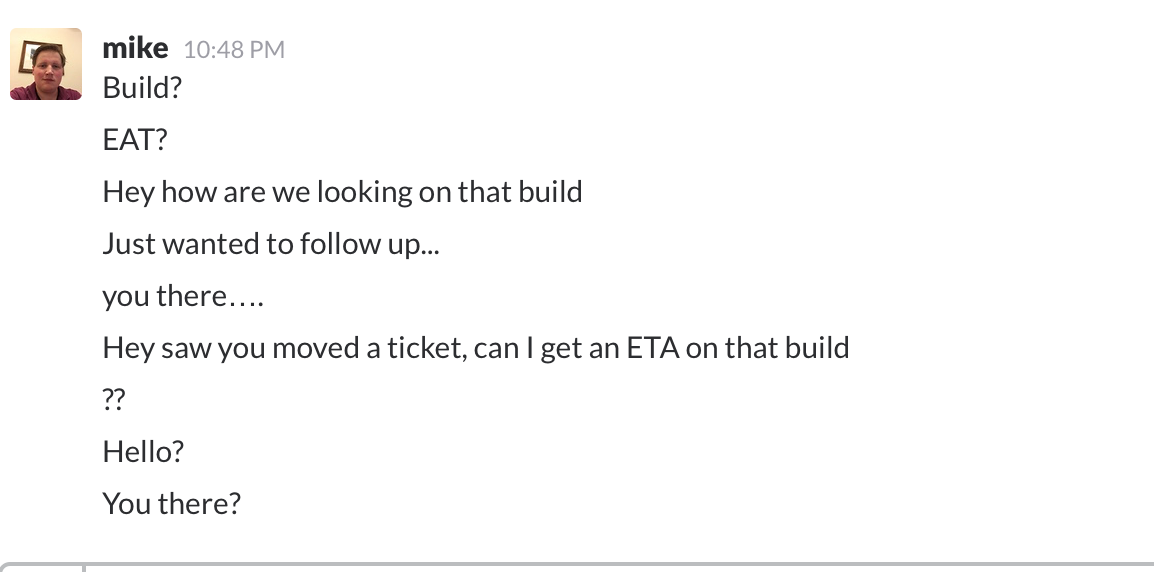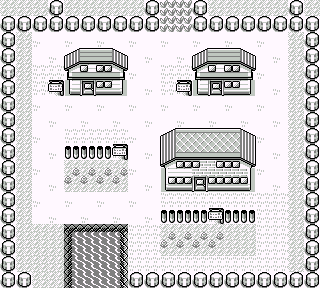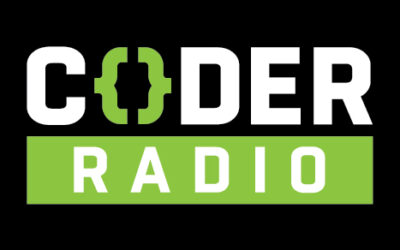 Slack is reducing my productivity and is almost certainly having a material negative effect on my day to day performance as well as my job enjoyment. Things started so well with Slack and I and I still love the vision of reducing email but something’s change, something’s been twisted….
Slack is reducing my productivity and is almost certainly having a material negative effect on my day to day performance as well as my job enjoyment. Things started so well with Slack and I and I still love the vision of reducing email but something’s change, something’s been twisted….
In the beginning the initial goal of Slack was to make team communications easier and cut down on useless (or at the lest nonproductive) emails. I am happy to say that for the most part that’s happened for us internally at Buccaneer; in fact, we have almost zero internal email threads in a given week that aren’t forwarding something from a customer-facing person to someone else and even then most of that is handled in Slack as well. That’s great!
Then Slack added guest accounts, single channel accounts, and the ability to have multiple accounts on one Slack client and what was a great internal communication tool became the customer service portal from Hell. I can see how the folks over at Slack thought they might reduce the strain of customer communications just as they had internal communications. Possibly they thought Slack chats might replace daily stand ups, weekly status meetings, or “checkin emails”. Sadly, they were mistaken. Due to the expectation of virtually immediate response on Slack, it actually makes these problems worse.
In terms of daily standup (which I will go to my grave claiming is pointless in a group greater than six) Slack is treated as “in addition to” rather than a “replacement for”. Same problem for weekly status meetings.
Though it’s the daily (or worse “build”) checkin email that Slack has truly perverted , twisting it into a nightmare that leaves me muttering “the horror the horror” at the end of every sprint. The beauty of the checkup email and email in general is that it’s socially acceptable to not reply immediately. Indeed, one of the best ways to respond to those sort of things for me was to wait until I had something positive to say or respond by EOB whichever came first. Just a few hours can make what might be a bad or awkward conversation into a good one and email allowed me to manage my time in a way that I could find those hours with no more (and sometimes not even) a “I’ll follow up with you by EOB”. Thanks to Slack, the conversation goes a little more like:

Get enough of these and you’ll be dreaming of the halcyon days of once weekly conference calls and formal EOB update emails.
Don’t get me wrong. I am not against open lines of communication but sometimes things take time and you want to craft a more sophisticated response than you can get when being barraged by messages. Of course from the sender’s perspective Slack is a form of instant messaging with an emphasis on the instant as in NOW part. Unfortunately, responding to even the most cursory of messages requires a context switch and any experienced developer will tell you that’s a productively killer.
What Slack needs is a more aggressive version of their current Do Not Disturb feature. One that not only warns the sender that you are not available but that actively says you are busy. This is something that HipChat, an Atlasssian competitor to Slack, has had since before Slack was even around. On HipChat if you mark yourself as busy, it puts up a red logo that looks like a traffic sign and actively warns any senders that they are probably interrupting you by messaging you. The difference may seem subtle if you aren’t like me and used HipChat for a long time before Slack, but in terms of communicating your status to your team and any customers in the system, HipChat is clear — away really means away, available really means available, and busy means leave me alone I am working.
What do you think? Is it just me? Find me on Twitter and let me know. Also, do fill out the contact form on this page, I am a 50% promotion for getting new hybrid app development projects started. If you’ve been thinking of getting an app for your business or even just have an idea you want to validate, there’s never been a better time to reach out!






